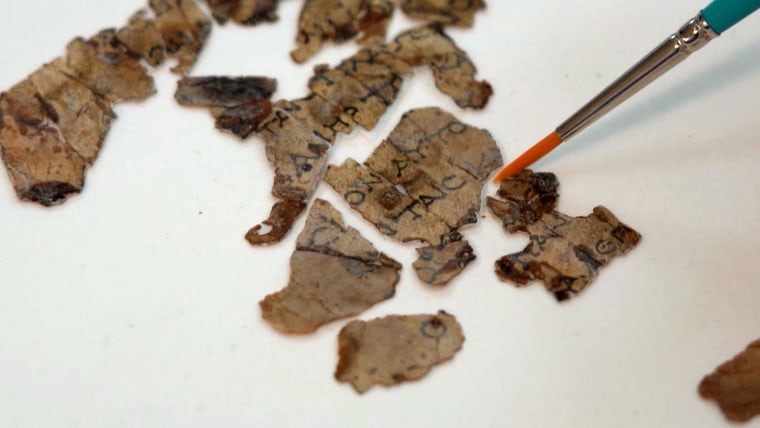TEL AVIV — Scientists say they have discovered a new kind of early human after studying pieces of fossilized bone dug up at a site used by a cement plant in central Israel.
The fragments of a skull and a lower jaw with teeth were about 130,000 years old and could force a rethink of parts of the human family tree, the researchers from Tel Aviv University and the Hebrew University of Jerusalem said Thursday.
Nesher Ramla Homo — named after the place southeast of Tel Aviv where it was found — may have lived alongside our species, Homo sapiens, for more than 100,000 years, and may have even interbred, according to the findings.
The early humans, who had very large teeth and no chin, may have also been ancestors of the Neanderthals, the study added, challenging the current thinking that our evolutionary cousins originated in Europe.
"The discovery of a new type of Homo is of great scientific importance," said Israel Hershkovitz of Tel Aviv University, one of the leaders of the team that analyzed the remains.
"It enables us to make new sense of previously found human fossils, add another piece to the puzzle of human evolution, and understand the migrations of humans in the old world."
Download the NBC News app for breaking news and politics
Dr Yossi Zaidner of the Hebrew University found the fossils while exploring the mining area of the Nesher cement plant near the city of Ramla, the universities said in their statement.
Excavators uncovered the bones about 25 feet deep among stone tools and the bones of horses and deer.
The study said the Nesher Ramla resembled pre-Neanderthal groups in Europe.
"This is what makes us suggest that this Nesher Ramla group is actually a large group that started very early in time and are the source of the European Neanderthal," said Hila May, a physical anthropologist at the Dan David Center and the Shmunis Institute of Tel Aviv University.
Experts have never been able to fully explain how Homo sapiens genes were present in the earlier Neanderthal population in Europe, May said, and the Nesher Ramla may be the mystery group responsible.
The jaw bone had no chin and the skull was flat, she said. 3D shape analysis later ruled out relation to any other known group.
What they did match, May said, were a small number of enigmatic human fossils found elsewhere in Israel, dating back even earlier, that anthropologists had never been able to place.
"As a crossroads between Africa, Europe and Asia, the land of Israel served as a melting pot where different human populations mixed with one another, to later spread throughout the Old World," said Dr Rachel Sarig, from Tel Aviv University.
Sheela Athreya, a Texas A&M University paleoanthropologist who was not involved in the study, said the new research "gives us a lot to think about in terms of the history of population groups in this region, and how they may have interacted with populations in other regions, in Europe and North Africa."
The Nesher Ramla fossils “look like something on a lineage heading toward Neanderthal," said Eric Delson, a paleoanthropologist at Lehman College in New York who was not involved in the study. He characterized the findings as "fossils of what appears to be an intermediate variety — this group may be predecessors to Neanderthals in this area."
Science - Latest - Google News
June 25, 2021 at 03:54PM
https://ift.tt/3xKnMo2
New early human discovered in 130,000-year-old fossils at Israeli cement site - NBC News
Science - Latest - Google News
https://ift.tt/2Kb7H4e
https://ift.tt/3ceUkwc
Bagikan Berita Ini


















0 Response to "New early human discovered in 130,000-year-old fossils at Israeli cement site - NBC News"
Post a Comment